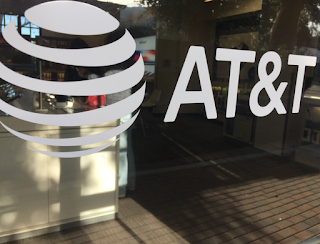AT&T, which has previously stated plans to virtualize and software-control 75% of its core network functions by 2020, said that it is on target to reach the 65% virtualization milestone this ahead, coinciding with the rollout of mobile 5G service.
In a blog post, Chris Rice, Senior Vice President – AT&T Labs, Domain 2.0 Architecture and Design, outlines several major open source initiatives that the company has been spearheading to drive network transformation.
AT&T also plans to roll out over 60,000 white box routers over the next several years across the U.S. to enable advanced services on its mobile 5G infrastructure. These white box routers run the “Disaggregated Network Operating System,” or dNOS, which uses technology from its acquisition of Vyatta.
"White box represents a radical realignment of the traditional service provider model,” said Andre Fuetsch, chief technology officer and president, AT&T Labs. “We’re no longer constrained by the capabilities of proprietary silicon and feature roadmaps of traditional vendors. We’re writing open hardware specifications for these machines, and developing the open source software that powers these boxes. This means faster hardware upgrades, since anyone can build to these specs. And software upgrades that move at internet speed. We’re doing this all while keeping costs low so we can focus on expanding our nationwide mobile 5G footprint for our customers as quickly as possible."
http://about.att.com/innovationblog/att_framework
In a blog post, Chris Rice, Senior Vice President – AT&T Labs, Domain 2.0 Architecture and Design, outlines several major open source initiatives that the company has been spearheading to drive network transformation.
- ONAP – The operating system for Network Clouds. Since formation a year ago, the project now brings together over 50 of the largest network and cloud operators and technology providers from around the globe, representing more than 60% of the world’s mobile subscribers. AT&T is leading the software contribution and together with project members plans to deliver the second ONAP release, Beijing, in the second quarter of this year.
- DANOS – The operating system for individual white box servers that power a virtualized network. And we recently announced we are taking white boxes, running on DANOS, to scale in our network and will plan to install as many of 60,000 of these white box routers to support our 5G build out over the next few years.
- Acumos – An industry-first AI platform and marketplace, co-created with Tech Mahindra, that makes it easy to chain multiple microservices together in a simple drag-and-drop interface. And The Linux Foundation recently announced the public availability of Acumos, meaning anyone can now access the platform and begin building AI applications. We’re also releasing our Acumos whitepaper, where we highlight our direction and efforts in this area.
- Akraino Edge Stack – A complete software platform for edge computing systems and applications. The Linux Foundation also recently announced that Intel among others have signed on as members of the community. We’re seeing early indicators of progress that are encouraging, and this growing collaboration will help to expedite the maturity and adoption of edge cloud.
AT&T also plans to roll out over 60,000 white box routers over the next several years across the U.S. to enable advanced services on its mobile 5G infrastructure. These white box routers run the “Disaggregated Network Operating System,” or dNOS, which uses technology from its acquisition of Vyatta.
"White box represents a radical realignment of the traditional service provider model,” said Andre Fuetsch, chief technology officer and president, AT&T Labs. “We’re no longer constrained by the capabilities of proprietary silicon and feature roadmaps of traditional vendors. We’re writing open hardware specifications for these machines, and developing the open source software that powers these boxes. This means faster hardware upgrades, since anyone can build to these specs. And software upgrades that move at internet speed. We’re doing this all while keeping costs low so we can focus on expanding our nationwide mobile 5G footprint for our customers as quickly as possible."
http://about.att.com/innovationblog/att_framework




















